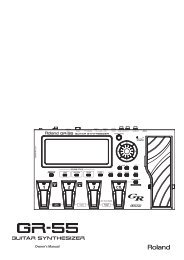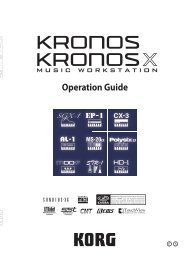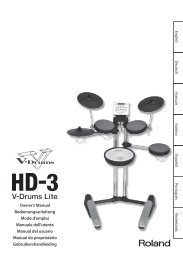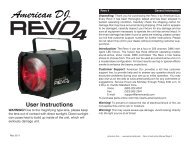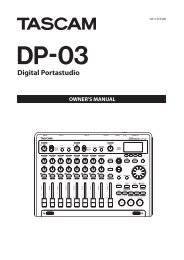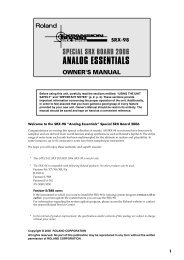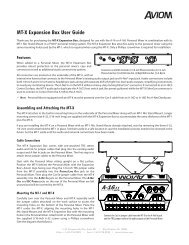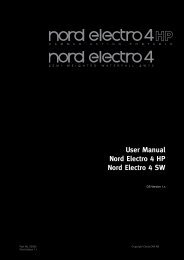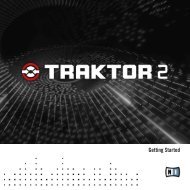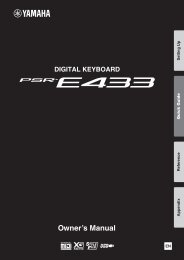Korg Microkorg Owner's Manual - zZounds.com
Korg Microkorg Owner's Manual - zZounds.com
Korg Microkorg Owner's Manual - zZounds.com
You also want an ePaper? Increase the reach of your titles
YUMPU automatically turns print PDFs into web optimized ePapers that Google loves.
7. FILTER EG — SYNTH<br />
Here you can make settings for the filter EG, which applies time-variant change to the tone (➝Figure 7-1). Make these settings to specify the<br />
"shape" of the EG, and use the FILTER parameter "FILTER EG INT" to specify the amount of effect that the EG will have (➝p.24). By making<br />
FILTER EG settings, you can make the tone change as time passes. Create the desired tonal curve by adjusting the ADSR parameters;<br />
ATTACK (knob 1), DECAY (knob 2), SUSTAIN (knob 3), RELEASE (knob 4).<br />
For details on how an EG (Envelope Generator) works, refer to AMP EG (➝p.28).<br />
You can use the FILTER EG as a Virtual Patch source modulate a parameter other than the filter cutoff frequency. (➝p.30)<br />
ATTACK [0...127]<br />
Specifies the time from note-on<br />
(when the key is pressed) until the<br />
attack level (maximum value of the<br />
envelope) is reached.<br />
Figure 7-1<br />
Cutoff<br />
Attack Level<br />
0<br />
Note on<br />
[1]<br />
[2]<br />
[3]<br />
Note off<br />
DECAY [0...127]<br />
Specifies the time from when the attack<br />
level is reached until the sustain<br />
level (SUSTAIN) is reached.<br />
[4]<br />
[1]: Attack Time [3]: Sustain Level<br />
[2]: Decay Time [4]: Release Time<br />
Time<br />
SUSTAIN [0...127]<br />
Specifies the cutoff frequency that<br />
will be maintained after the decay<br />
time has elapsed, until you release<br />
the key.<br />
RELEASE [0...127]<br />
Specifies the time from note-off<br />
(when the key is released) until the<br />
level reaches 0.<br />
Filter EG and Amplifier EG<br />
When the Filter EG changes the cutoff frequency, the tone will change.<br />
However depending on the volume changes produced by the Amplifier<br />
EG, this can be heard in different ways. For example by changing the<br />
speed at which the tone and volume begin (attack) or decay, you can<br />
significantly vary the character of the tonal change. It is a good idea to<br />
adjust the changes of both the Filter EG (tone) and the Amplifier EG<br />
(volume) as you proceed with editing.<br />
EG RESET<br />
[OFF, ON]<br />
Specifies whether or not the EG will<br />
be reset for the second and subsequent<br />
note-on. If a new note is<br />
played before the previous note has<br />
finished its release stage, the envelope<br />
can either start over from zero,<br />
or continue from the current value.<br />
OFF ( ):<br />
The note will start from the current<br />
EG level.<br />
ON ( ):<br />
The second note-on will start from<br />
a level of 0.<br />
OFF<br />
ON<br />
Note on<br />
Note off<br />
Note on (Retrigger)<br />
The "EG RESET" parameter is<br />
only available if "VOICE AS-<br />
SIGN" is set to Poly, or if "VOICE<br />
ASSIGN" is set to Mono or Unison<br />
and "TRIGGER" is set to<br />
Multi.<br />
26



